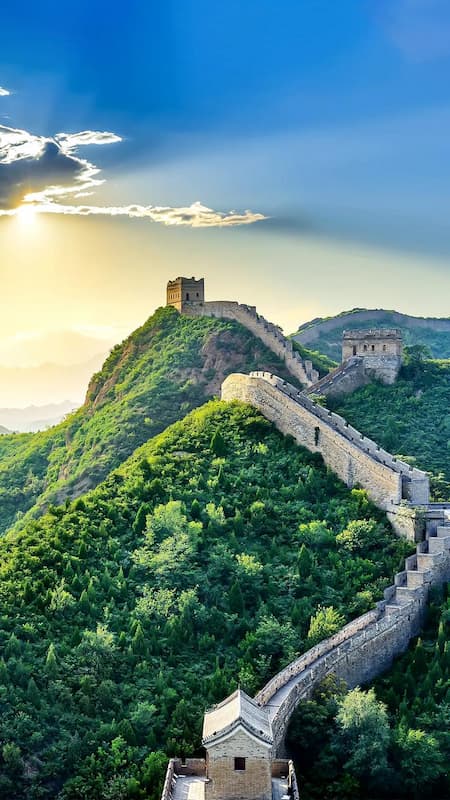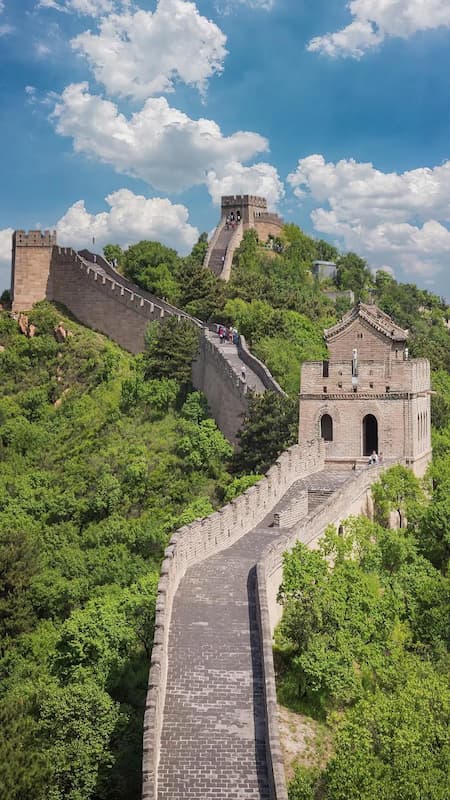The Great Wall of Beijing: A Journey to the Wonders of the World
1. What is the Great Wall?
The Great Wall is an ancient Chinese defense project known as one of the “New Seven Wonders of the World”. It was built more than 2,000 years ago during the Spring and Autumn and Warring States Periods, and was later expanded and reinforced on a large scale during the Ming Dynasty (1368-1644). The main function of the Great Wall was to defend against the invasion of nomads from the north, and today it has become one of the most famous tourist attractions in China.
2. Why is the Great Wall so famous?
The Great Wall is not only a symbol of China, but also one of the greatest structures in human history. With a total length of more than 21,000 kilometers (about 13,000 miles), it spans several provinces in the north of China. 1987, the Great Wall was inscribed on the UNESCO World Heritage List and attracts millions of tourists from all over the world.

3. What are the Great Walls near Beijing?
The Great Wall passages around Beijing are the most popular and mainly include:
Badaling Great Wall: the most classic section with good facilities for first-time visitors.
Mutianyu Great Wall: beautiful scenery, fewer people, suitable for those who like quiet.
Simatai Great Wall: preserving the original style, more dangerous, suitable for adventurers.
Jinshanling Great Wall: a paradise for photographers, especially magnificent at sunrise and sunset.
4. Badaling Great Wall: the most popular section
The Badaling Great Wall, about 70 kilometers from downtown Beijing, is the most accessible and well-equipped section. There are cable cars and slides to make it easy for visitors to go up and down the mountain. The wall is wide enough for walking and you can see ancient beacon towers and enemy towers along the way. However, there are more tourists during holidays, so it is recommended to leave early.

5. Mutianyu Great Wall: less crowded and beautiful
If you don’t like crowds, Mutianyu Great Wall is a good choice. Surrounded by green trees, the scenery varies from season to season, especially the red leaves in autumn and the snow scene in winter is particularly fascinating. There is also a section of the “Wild Great Wall” that you can explore at Mutianyu, but be safe.
6. Simatai and Jinshanling: The Adventurers’ Choice
The Simatai Great Wall is known for its steepness, and some of its sections are very steep for those who like a challenge. The Jinshanling Great Wall, on the other hand, retains a more pristine appearance and is a favorite among photographers. These two sections of the Great Wall are far away from downtown Beijing, so it is recommended to arrange a whole day to visit them.
7. Best time to visit
Spring and Autumn (April-May, September-October): the weather is cool and the scenery is most beautiful.
Summer (June-August): the weather is hot, but you can get up early to avoid the crowds.
Winter (November-March): fewer tourists, spectacular snow, but keep warm.
8. How to reach the Great Wall?
Public transportation: From downtown Beijing, you can take a special tourist bus or bus to Badaling, Mutianyu and other popular sections.
Self-driving or chartered buses: suitable for going to more distant passages, such as Simatai or Jinshanling.
Group tour: save your energy and effort, the guide will explain the history and culture of the Great Wall.
9. Tips for touring
Wear comfortable shoes: many sections of the Great Wall are steep slopes and steps, so sneakers are most suitable.
Bring enough water and snacks: there are not many places to sell things on the Great Wall, especially in the more remote sections.
Pay attention to sun protection: the sun is strong in summer, so it is recommended to wear a hat and sunscreen.
Respect the monuments: don’t carve and paint to protect this precious historical heritage.
10. Historical Stories of the Great Wall
The Great Wall is not only an architectural marvel, but also carries a rich history. For example, the legend of “Meng Jiangnu Weeping at the Great Wall” tells the story of a woman who cried because her husband died during the construction of the Great Wall, and the wall eventually collapsed. In addition, the beacon towers on the Great Wall were once important facilities for transmitting military information in ancient times.
11. Why is the Great Wall worth seeing?
The Great Wall is not only the pride of China, but also the valuable heritage of all mankind. Standing on the Great Wall, you can feel the wisdom of ancient craftsmen, enjoy the magnificent natural scenery and take unforgettable photos. Whether you are a history lover, a photography fan, or a common tourist, the Great Wall will make your trip worthwhile!
- 1. What is the Great Wall?
- 2. Why is the Great Wall so famous?
- 3. What are the Great Walls near Beijing?
- 4. Badaling Great Wall: the most popular section
- 5. Mutianyu Great Wall: less crowded and beautiful
- 6. Simatai and Jinshanling: The Adventurers' Choice
- 7. Best time to visit
- 8. How to reach the Great Wall?
- 9. Tips for touring
- 10. Historical Stories of the Great Wall
- 11. Why is the Great Wall worth seeing?